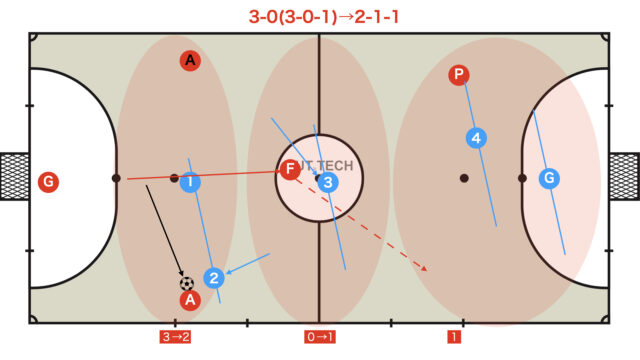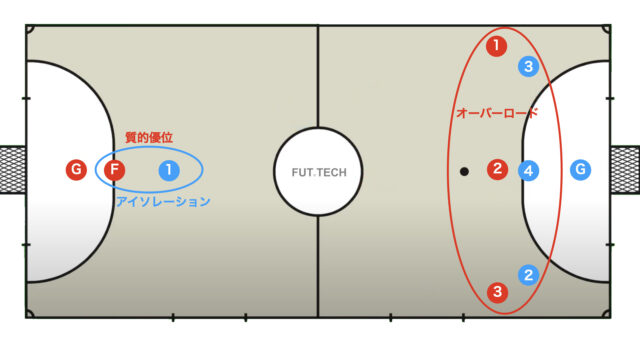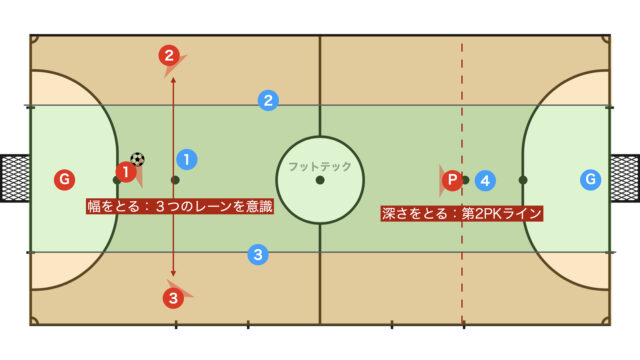When playing futsal, you often hear the term “line cut“, but few can provide a precise definition.
A line cut is an off-the-ball movement that crosses (goes over) the opponent’s DF line.
This line cut is a concept that plays a crucial role in breaking down the opponent’s zone defence. Whether you understand this concept or not can dramatically change the scope of your futsal attacks.
In this article, we will cover:
- What is a futsal line cut?
- The tactical purpose of the line cut
- Specific applications of the line cut
We will explain these topics.
What is a futsal line cut?
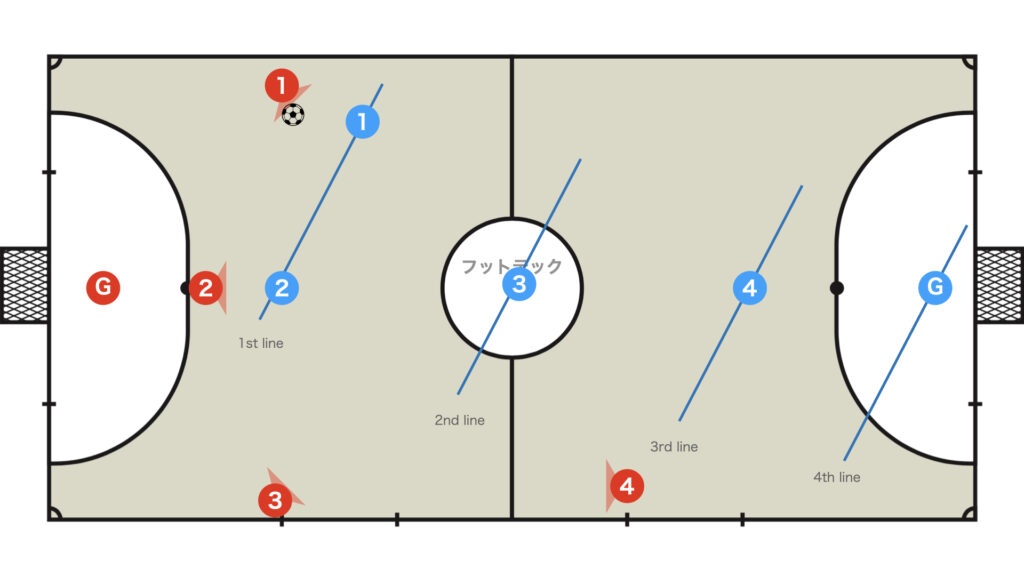
A line cut is a movement that crosses (goes over) the opponent’s DF line.
In futsal, when employing zone defence, the basic concept is to form multiple DF lines. The movement that crosses these lines is called a line cut.
If you do not understand the concept of multiple DF lines, we recommend reading the article below first.
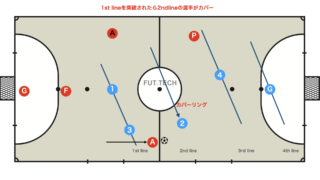
From here on, we will explain assuming you understand the concept of multiple DF lines.
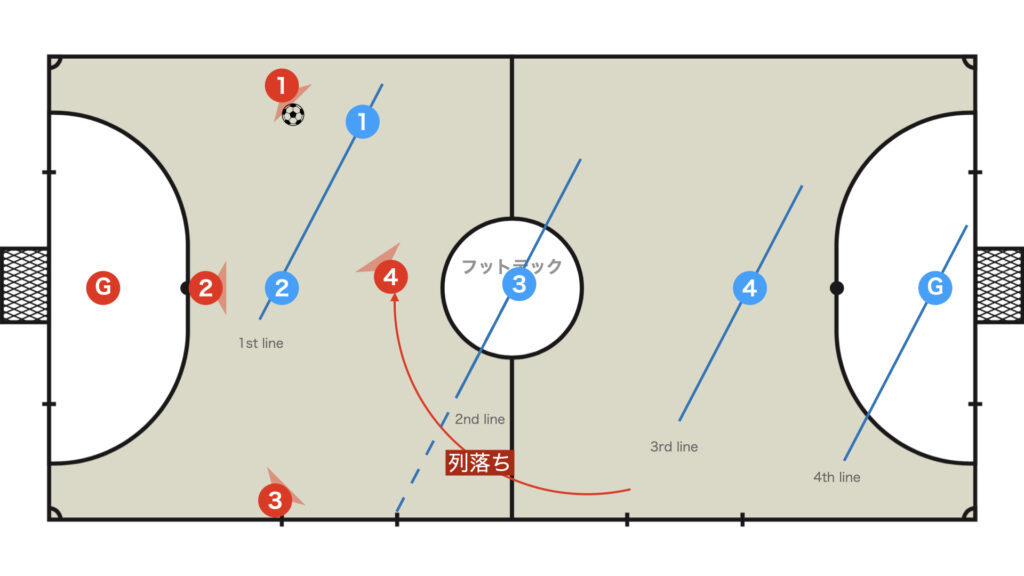
As shown with the pivo in the image above, the movement of an attacking player crossing the defending team’s DF line is a line cut.
In futsal, line cuts that involve dropping the line are often highlighted, although a movement that advances the line is also considered a line cut.
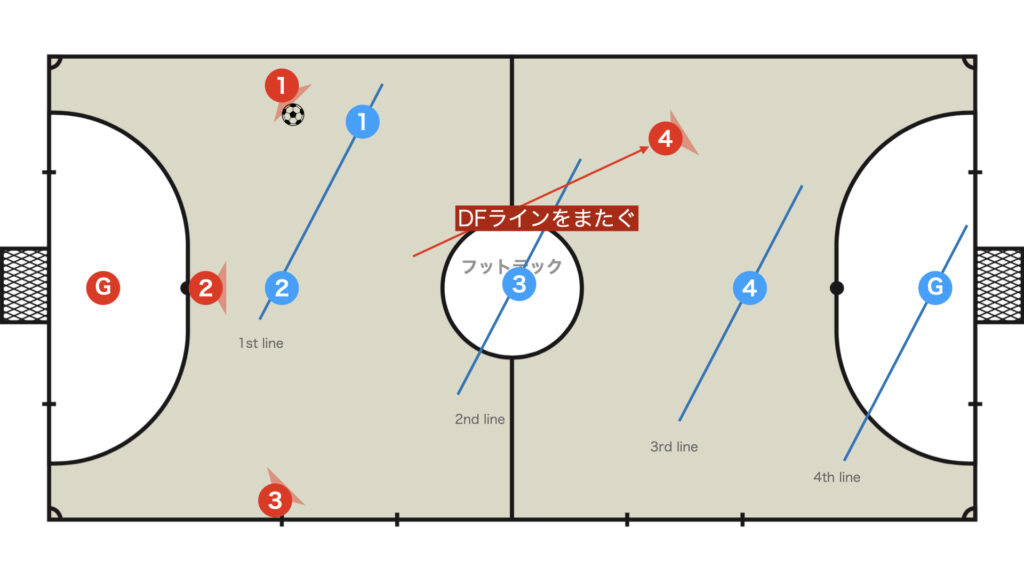

The movement shown in the image above is referred to as an escaping movement, but since it crosses the DF line, it is a type of line cut.
However, generally, “line cut” more often refers to the movement of dropping the line rather than an escaping movement.
This article focuses on the line cut that involves dropping the line.
In Spain, where futsal is popular, there are about eight different names for line cut, and there is ongoing debate over whether they should be unified. Incidentally, in PescaDora Machida, the line cut is called Lemonte.
The Tactical Purpose of Futsal Line Cut
The tactical purposes of the line cut are as follows:
- Change formation from 3-1 to 4-0 (quatro)
- Create local numerical superiority
- Absorb the opponent’s multiple DF lines
We will explain these in detail.
Formation Change from 3-1 to 4-0 (quatro)
One of the tactics using line cuts is the formation change from a false pivo (3-1) to a quatro (4-0).



In this way, when the pivo drops from the side and transitions into a 4-0 formation, it causes confusion among the opposing defenders.
Looking at teams from Spain, you can see that they naturally perform formation changes between 4-0 and 3-1 using line cuts.


Creating Local Numerical Superiority in the First Line
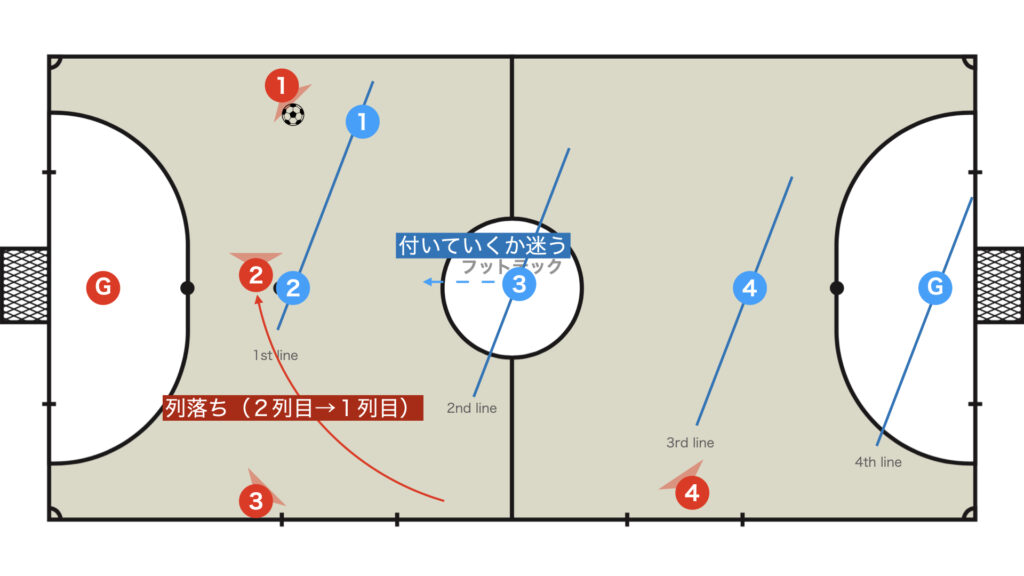


Local numerical superiority refers to having a numerical advantage in a specific limited zone.
When the attack is not going well, having the front player drop into the first line creates a local numerical advantage in the rear, making it easier to build up the attack.
In the image above, the formation changes from 2-1-1 to 3-1 (3-0-1) when a player from the second line drops back.
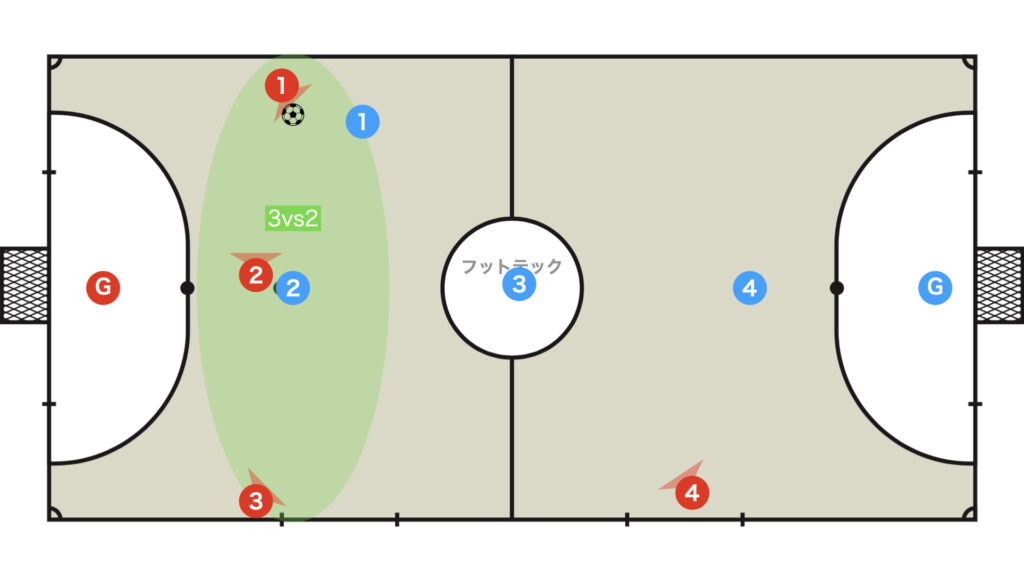

Because the defender from the second line (blue jersey number 3) did not follow the dropping player, a 3 vs 2 numerical superiority is created in the first line.
Absorbing the Opponent’s Multiple DF Lines


Conversely, if the opposing defenders mark the player executing the line cut man-to-man, their multiple DF lines consolidate into a single line, opening up space in the second line.
In such cases, the space can be exploited using a simple duo relationship (one-two, paralela).
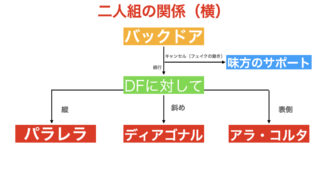

Disadvantages of Futsal Line Cut
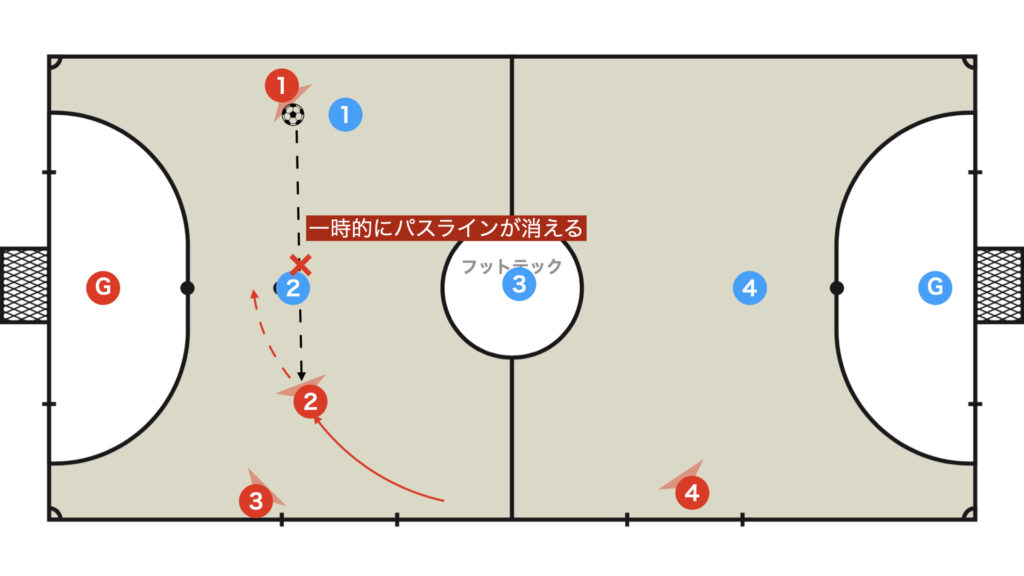

The disadvantage of a line cut is that the passing lane (pass course) from the ball temporarily disappears.
For this reason, in Spain there are quite a few coaches who dislike line cuts.
Additionally, if the team does not understand the tactical purpose of the line cut or share a common awareness, executing a line cut may lead to confusion among teammates.
Specific Tactics Using Line Cut



The rotation in a 3-1 formation is phenomenologically the same as a line cut from a 2-1-1 formation, so in this article we will explain it using the more familiar 3-1 rotation.
Two Types of Rotation (hedondo)
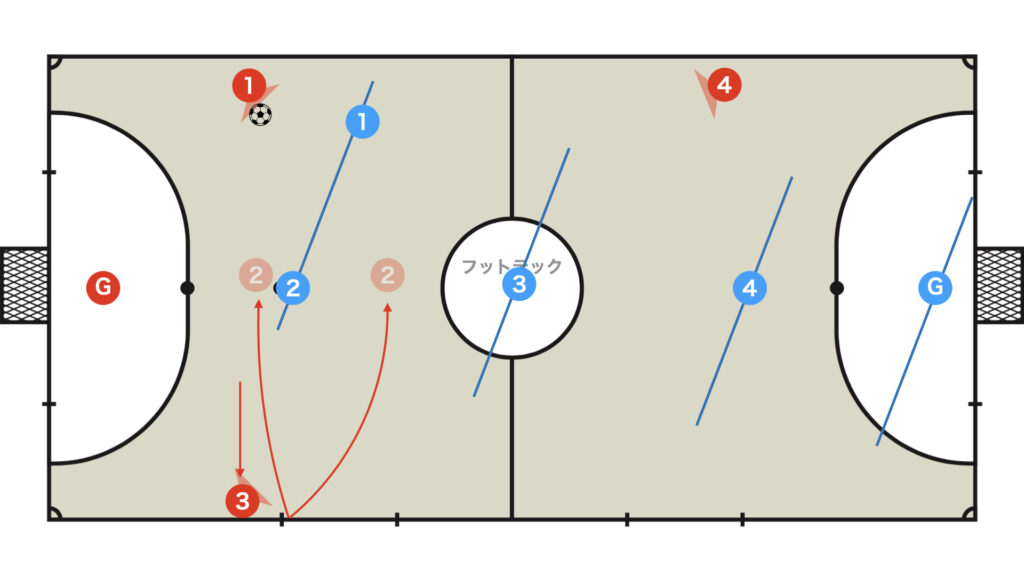

There are two types of rotations: one that uses the front (first line) of the 2ndDF (blue jersey number 2) and one that uses the back (second line, between the lines).
We will omit the rotation that utilizes the space between the lines as it deviates from the focus of this article.
If you are interested, please read the article below.
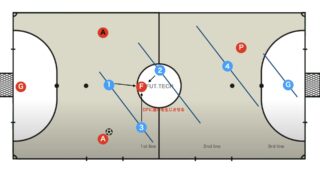

Tactical Purpose
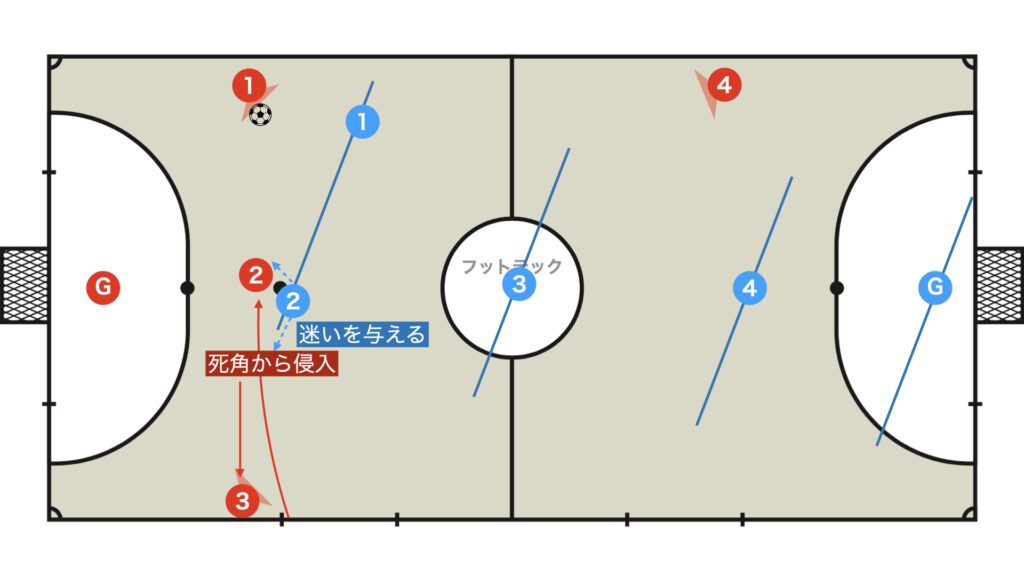

By penetrating from the blind spot of the 2ndDF, you can force the opposing defenders to hesitate between covering the inside or the outside.
The attacking team then chooses their attack based on how the 2ndDF responds.
We will explain each in turn.
When the 2ndDF Engages on the Outside: 2 vs 1
When the 2ndDF Engages on the Inside
Breaking Through
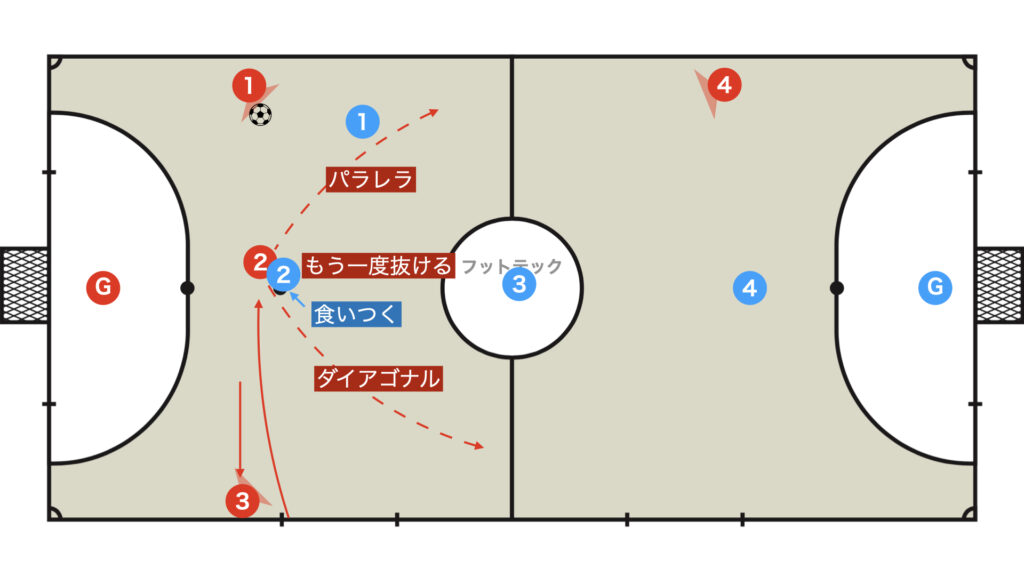

If the 2ndDF engages and the ball holder can pass into the space behind (without pressure), then a breakthrough is possible.
Ala-Ala (long pass)
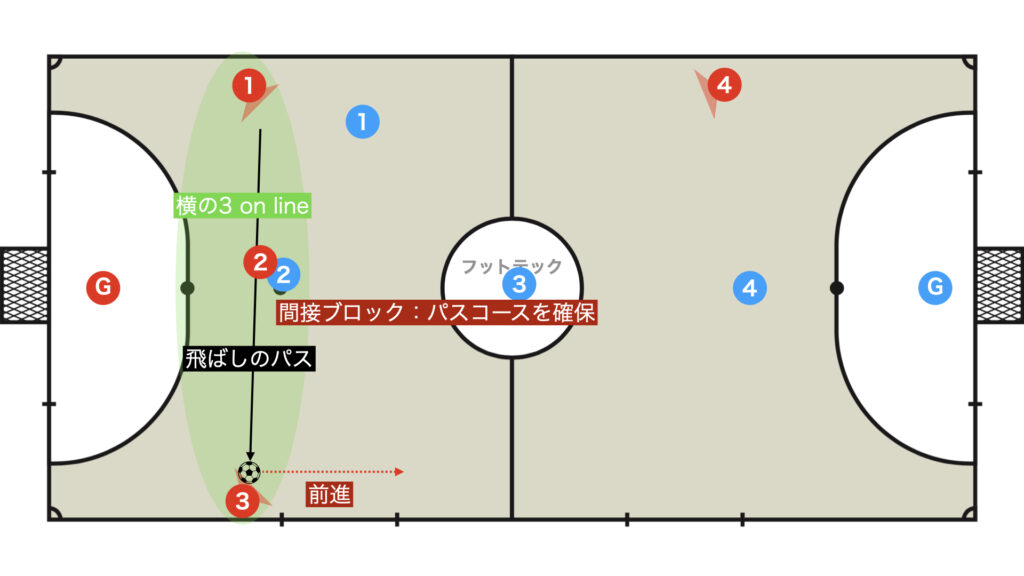

If the 2ndDF is engaging on the inside, it means that the defenders are biased to one side, so by simply switching sides you can dribble forward.
At that time, you can also secure a passing lane by indirectly blocking the 2ndDF.


Summary
We have explained the off-the-ball individual tactic, the line cut.
It may be a somewhat difficult concept for those with little futsal experience, but we hope you can at least grasp the definition of the term “line cut.”
To elevate the level of positional attack, it is crucial to understand the tactical purpose of the line cut and integrate it into the team strategy.
Furthermore, if only the player performing the line cut understands it, it is almost meaningless; therefore, having a shared understanding within the team is important.
We recommend initially practicing and introducing it in team training, such as enemy-free analytical training.
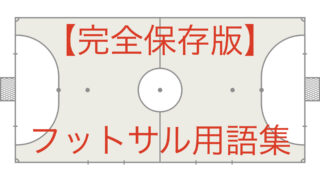

Thank you very much for reading this article to the end.
If you found this article useful, please consider sharing it using the social media share buttons above.
We regularly share valuable insights on futsal tactics on Twitter, so if you haven’t followed us yet, we’d appreciate your support!
We are committed to raising the level of futsal in Japan by sharing high-quality information through discussions with individuals who have coaching experience in the F.League and overseas.
If you have any questions or notice any mistakes, feel free to leave a comment below.
We update our articles regularly, so if you’d like to keep reading, please bookmark our site or search for “FutTech”!
